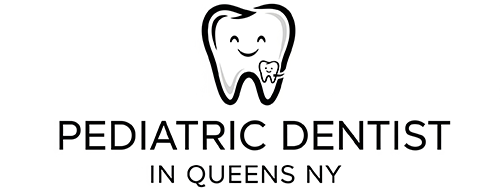Man, nothing makes your heart sink quite like hearing “you need a filling” at the dentist, right?
I’ve been there—suddenly you’re wondering if you’ll have to choose between fixing your tooth and paying rent.
After helping friends navigate this exact situation and digging into what dental pros actually charge, I figured I’d share what I’ve learned about filling costs.
Spoiler alert: it’s not as scary as you think, but there are definitely some tricks to avoid getting ripped off.
What Actually Determines Your Filling Cost?
Look, dental pricing isn’t pulled out of thin air—there’s method to the madness.
From what I’ve seen bouncing between different dentists (don’t ask), several things jack up or bring down that final bill.
Material Choice Makes a Huge Difference
Your filling material is like choosing between a Honda and a BMW—both get the job done, but one costs way more.
Silver amalgam runs cheapest at around $100-$250 per tooth, while fancy porcelain can hit $1,150 or more.
Composite (tooth-colored) stuff sits in the middle at roughly $150-$400, which is what most people go for these days.
Size and Location Matter More Than You’d Think
A tiny cavity in a front tooth? Quick fix.
But if you’ve got a monster cavity in a back molar that’s hard to reach? That’s gonna cost you.
Bigger cavities need more material and time, plus back teeth are trickier to work on—imagine trying to paint inside a cave with a flashlight.
Breaking Down Real Costs by Filling Type
Based on what I’ve gathered from insurance claims and actual dental bills, here’s what you’re looking at in most parts of the US:
Amalgam (Silver) Fillings: $100-$350
These are the old-school metal ones. They’re tough as nails—lasting 10-15 years easy—but they look like, well, metal in your mouth.
Great for back teeth where nobody sees them, not so much for your smile.
Composite (Tooth-Colored) Fillings: $150-$400
The popular choice because they blend with your teeth.
They’re not as durable as amalgam (5-10 years typically), but vanity wins, you know? Most people spring for these on visible teeth.
Gold Fillings: $250-$650
Practically indestructible and can last decades, but finding a dentist who still does gold work is like finding a unicorn.
Plus, unless you’re going for that rapper look, it’s pretty obvious.
Porcelain Fillings: $500-$1,150
The Cadillac of fillings—custom-made to match your teeth perfectly.
They’re basically mini works of art, but you’ll pay art prices. These are technically called inlays or onlays.
Where You Live Changes Everything: Dental Filling Costs by State
Getting a filling in Manhattan versus small-town Kansas? Totally different ballgame.
Urban dentists charge more because their rent’s insane, while rural practices often offer better deals.
I’ve seen the same procedure cost $200 in one state and $400 in another—crazy, right?
To give you a crystal-clear view of how your location can dramatically affect dental filling expenses, here’s a comprehensive, state-by-state table with average costs, estimated ranges for common filling types, and cost categories—sorted from lowest to highest for easy comparison.
| State | Average Out-of-Pocket Cost per Visit | Estimated Composite Filling Cost | Estimated Amalgam Filling Cost | Cost Category |
|---|---|---|---|---|
| Arkansas | $63.93 | $100-$220 | $80-$160 | Lowest |
| Idaho | $87.72 | $120-$250 | $100-$200 | Lowest |
| Kentucky | $90.92 | $125-$260 | $100-$210 | Lowest |
| Iowa | $91.72 | $125-$265 | $100-$210 | Lowest |
| Minnesota | $91.80 | $125-$265 | $100-$210 | Lowest |
| South Carolina | $92.57 | $130-$270 | $105-$215 | Lowest |
| Utah | $94.04 | $130-$275 | $105-$220 | Lowest |
| Nebraska | $95.69 | $135-$280 | $110-$225 | Lowest |
| North Dakota | $96.93 | $135-$285 | $110-$230 | Lowest |
| Ohio | $97.27 | $135-$285 | $110-$230 | Low |
| Kansas | $97.53 | $135-$285 | $110-$230 | Low |
| Hawaii | $97.93 | $135-$285 | $110-$230 | Low |
| Tennessee | $98.05 | $140-$290 | $115-$235 | Low |
| South Dakota | $98.38 | $140-$290 | $115-$235 | Low |
| Missouri | $98.92 | $140-$290 | $115-$235 | Low |
| Maryland | $100.06 | $140-$295 | $115-$240 | Low |
| Florida | $100.90 | $145-$300 | $120-$240 | Low |
| Arizona | $101.03 | $145-$300 | $120-$240 | Low |
| Alabama | $102.06 | $145-$300 | $120-$240 | Low |
| Wyoming | $103.19 | $145-$305 | $120-$245 | Low |
| West Virginia | $103.41 | $145-$305 | $120-$245 | Low |
| Nevada | $104.02 | $150-$310 | $125-$250 | Low |
| Pennsylvania | $104.13 | $150-$310 | $125-$250 | Low |
| Montana | $104.95 | $150-$310 | $125-$250 | Low |
| District of Columbia | $105.20 | $150-$315 | $125-$250 | Low |
| Indiana | $105.67 | $150-$315 | $125-$250 | Low |
| Georgia | $106.06 | $150-$315 | $125-$250 | Mid-Range |
| Maine | $107.33 | $155-$320 | $130-$255 | Mid-Range |
| New Mexico | $107.58 | $155-$320 | $130-$255 | Mid-Range |
| New Jersey | $108.21 | $155-$320 | $130-$255 | Mid-Range |
| Texas | $109.03 | $155-$325 | $130-$260 | Mid-Range |
| Oklahoma | $109.86 | $155-$325 | $130-$260 | Mid-Range |
| Michigan | $110.53 | $160-$330 | $135-$265 | Mid-Range |
| Colorado | $111.24 | $160-$330 | $135-$265 | Mid-Range |
| Connecticut | $114.28 | $165-$340 | $140-$270 | Mid-Range |
| Virginia | $116.08 | $165-$345 | $140-$275 | Mid-Range |
| Louisiana | $116.35 | $165-$345 | $140-$275 | Mid-Range |
| Rhode Island | $117.33 | $170-$350 | $145-$280 | Mid-Range |
| Oregon | $119.82 | $170-$355 | $145-$285 | Mid-Range |
| Wisconsin | $119.84 | $170-$355 | $145-$285 | Mid-Range |
| Illinois | $120.49 | $170-$355 | $145-$285 | Mid-Range |
| New York | $124.37 | $175-$365 | $150-$295 | Mid-Range |
| California | $125.80 | $180-$370 | $150-$300 | High |
| Mississippi | $130.43 | $185-$380 | $155-$310 | High |
| North Carolina | $131.76 | $185-$385 | $155-$315 | High |
| Delaware | $132.12 | $190-$390 | $160-$320 | High |
| Washington | $133.44 | $190-$395 | $160-$320 | High |
| Vermont | $136.78 | $195-$405 | $165-$330 | High |
| Massachusetts | $143.24 | $205-$420 | $170-$345 | High |
| New Hampshire | $152.18 | $215-$445 | $180-$365 | Highest |
| Alaska | $153.74 | $220-$450 | $185-$370 | Highest |
What This Means for Filling Costs
While these figures represent overall dental visit costs, filling prices typically follow similar patterns. Regional variations can be significant:
- Urban vs. Rural: Metropolitan areas like New York City or Los Angeles typically charge 20-50% more than rural areas
- Cost of Living: States with higher living costs generally have higher dental fees
- Insurance Coverage: Some states have better Medicaid dental coverage, affecting overall pricing
Practical Examples
Based on the data, here’s what you might expect to pay for a composite filling:
- In Arkansas or Idaho: $120-$250 per filling
- In Alabama or Kentucky: $130-$270 per filling
- In Massachusetts or Alaska: $200-$400 per filling
- In New York or California: $180-$350 per filling
Remember: These are estimates based on regional cost patterns. Individual dentists within the same state can vary significantly, and factors like insurance coverage, practice overhead, and dentist experience all play major roles in final pricing.
Insurance: Your Best Friend or Biggest Headache?
Most dental insurance covers fillings because they’re considered “necessary” (unlike that teeth whitening you’ve been eyeing).
Typically, plans cover 80% after you hit your deductible, leaving you with about $30-$60 out of pocket for basic fillings.
But here’s the catch—insurance companies can be picky about materials.
They’ll usually cover amalgam and composite no problem, but good luck getting them to pay for gold or porcelain. They consider those “cosmetic upgrades.”
Pro tip: Always check if your dentist is in-network.
Out-of-network can double your costs, and trust me, that adds up fast.
Smart Ways to Save Without Compromising Quality
Shop Around, But Don’t Go Crazy
Call a few offices for quotes—prices can vary wildly even in the same neighborhood.
But remember, the cheapest isn’t always the best. You want someone who won’t botch the job.
Consider Dental Schools
Students need practice, and they’re supervised by experienced professors.
You can save 30-50% this way. Sure, it takes longer, but your wallet will thank you.
Payment Plans Are Your Friend
Many dentists offer financing—some even interest-free if you pay within a certain timeframe.
Don’t be shy about asking; they want your business.
Time It Right
If you have a flexible spending account (FSA) or health savings account (HSA), use that pretax money.
It’s like getting a discount equal to your tax bracket.
Red Flags to Watch For
Suspiciously Low Prices: If someone’s charging way below market rate, ask why. Are they using quality materials? Are they properly licensed?
Pressure for Expensive Options: A good dentist explains your choices without pushing the priciest option. If they insist you “need” gold when amalgam would work fine, get a second opinion.
No Clear Breakdown: Any legit practice should explain exactly what you’re paying for—materials, time, additional procedures. If they’re vague, walk away.
The Bottom Line on Filling Costs
Here’s the deal: dental fillings typically run $100-$600 per tooth, with most people paying around $200-$300.
That’s not chump change, but it’s way less than the root canal or extraction you’ll need if you ignore the problem.
Yeah, it stings to shell out a few hundred bucks for something you can’t even see, but think of it as an investment in not having excruciating tooth pain at 3 AM.
Been there, done that, wouldn’t recommend it.
Frequently Asked Questions About Dental Filling Costs
How much does a filling cost without insurance?
Without coverage, expect to pay $150-$400 for most fillings, though it can range from $100-$1,150 depending on the material and location.
Are expensive fillings worth it?
For visible teeth, composite fillings are worth the extra cost for aesthetics. For back teeth, cheaper amalgam works just fine and lasts longer.
How long do dental fillings last?
Amalgam lasts 10-15 years, composite 5-10 years, and gold can go 20+ years. Porcelain typically lasts 10-15 years.
Does insurance cover all types of fillings?
Most plans cover amalgam and composite at 80%, but may not cover gold or porcelain, considering them elective upgrades.
Can I negotiate filling costs?
Absolutely! Many dentists offer discounts for cash payments or will work with you on payment plans, especially if you’re upfront about budget constraints.
How much do multiple fillings cost?
Each filling is typically priced separately, so multiple fillings can add up quickly. Some dentists offer slight discounts for multiple procedures in one visit.
Are dental school fillings safe?
Yes, students work under close supervision of licensed dentists. The quality is good, though appointments take longer.
What happens if I can’t afford a filling?
Look into community health centers, dental schools, or nonprofit organizations that provide reduced-cost care. Don’t ignore it—problems only get worse and more expensive.
Do filling costs include X-rays and exams?
Usually not—those are separate charges. A typical exam runs $75-$200, and X-rays add another $25-$50.
How much does it cost to replace a filling?
Roughly the same as the original filling, unless complications arise. Some dentists offer slight discounts for replacements.
References
https://www.beckersdental.com/benchmarking/average-out-of-pocket-cost-for-a-visit-to-the-dentist-in-each-state/
https://www.foxbusiness.com/lifestyle/best-worst-states-dental-health
https://www.beckersdental.com/benchmarking/11-states-with-lowest-highest-dental-costs/

Dr. Mary G. Trice is a renowned pedodontist based in Queens, NY. With an unwavering dedication to children’s dental health. In addition to her clinical practice, Dr. Trice is the writer and manager behind the informative platform pediatricdentistinqueensny.com. Through this site, she offers valuable insights, tips, and resources for parents and guardians, aiming to bridge the gap between professional dental care and everyday oral hygiene practices at home.
